Tuesday, June 3, 2025 – SEE HOW THE MODERN WOMAN WAS PORTRAYED 90 YEARS AGO

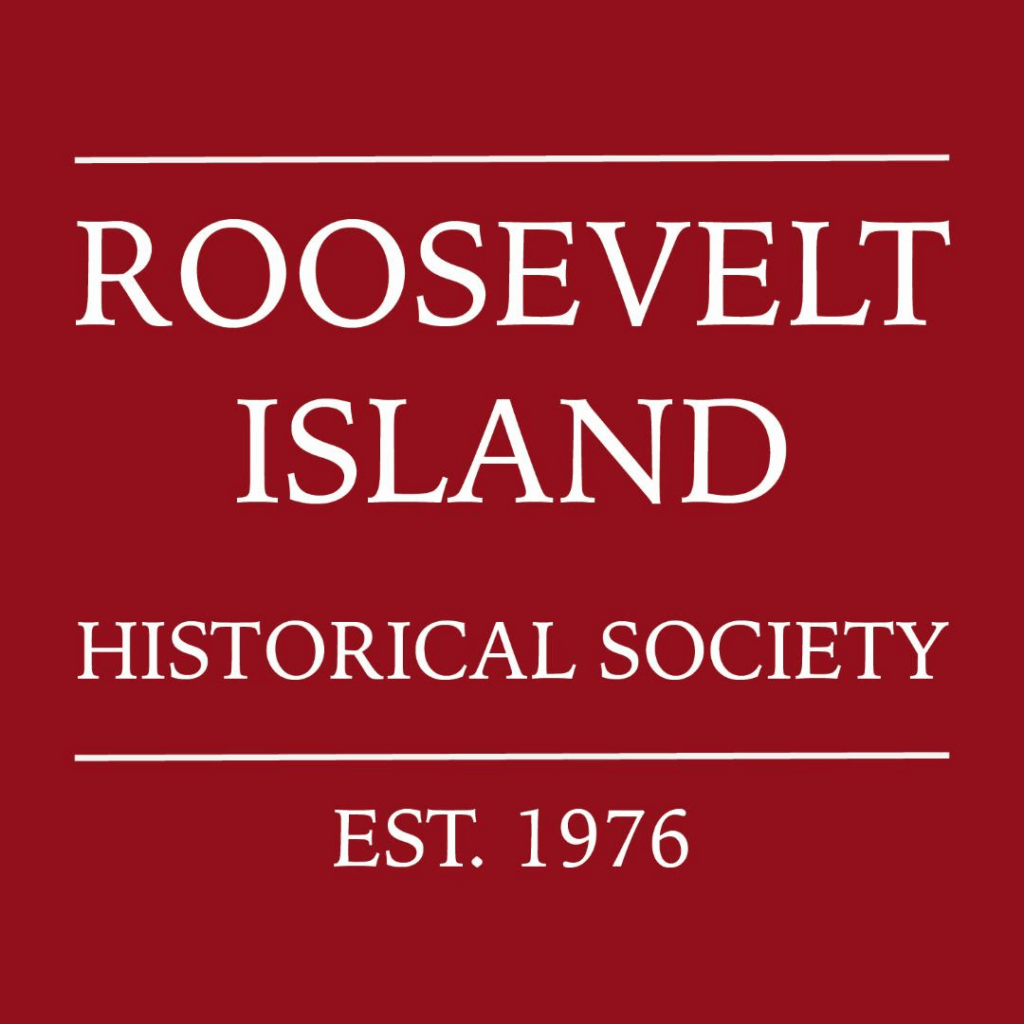
Defining a New Era for American Women:
The New York Woman Magazine
Tuesday, June 3, 2025
New-York Historical Blog
Issue #1461
The 1930s was a time of immense change for American women. This was especially true for women working in New York City, who saw their professional, economic, and social opportunities rapidly expand during this decade.
Historians predominantly characterize the 1930s in the United States as an era of economic turmoil due to the Great Depression. Nevertheless, women joined the urban workforce in unprecedented numbers. The rate of working women rose to 24%, with nearly 50% of single women in employment. In New York alone, there were 13 million women employed by the end of the decade, compared to 10.5 million in 1930. The majority of these women worked in clerical jobs in the rapidly expanding American corporate sector or in teaching and nursing. Some trailblazing women also achieved careers in law, finance, publishing, and politics.
American cities thus became hubs of opportunity for ambitious—mostly single—women. Indeed, 1930s New York embodied the exciting, liberating possibilities that the modern metropolis could hold for American women, as the epicenter of commercial, technological, cultural, and social innovation in the United States.

The New York Woman captured the emergence of the urban career woman as a defining figure of modern New York. The magazine became one of the best-selling publications of the 1930s. Written and “edited for the women of metropolitan New York,” the magazine sold out within 24 hours when the first issue hit the shelves on September 9, 1936.
Published weekly on Wednesdays, The New York Woman catered to the urban career woman’s interests in:
“LOVE – MARRIAGE – POLITICS – PERSONALITIES – SOCIETY – MOVIES – THEATRE – DANCING – FASHION – BEAUTY – COOKING – DECORATING – WHERE TO BUY – WHAT TO DO – HOW TO HAVE FUN!”
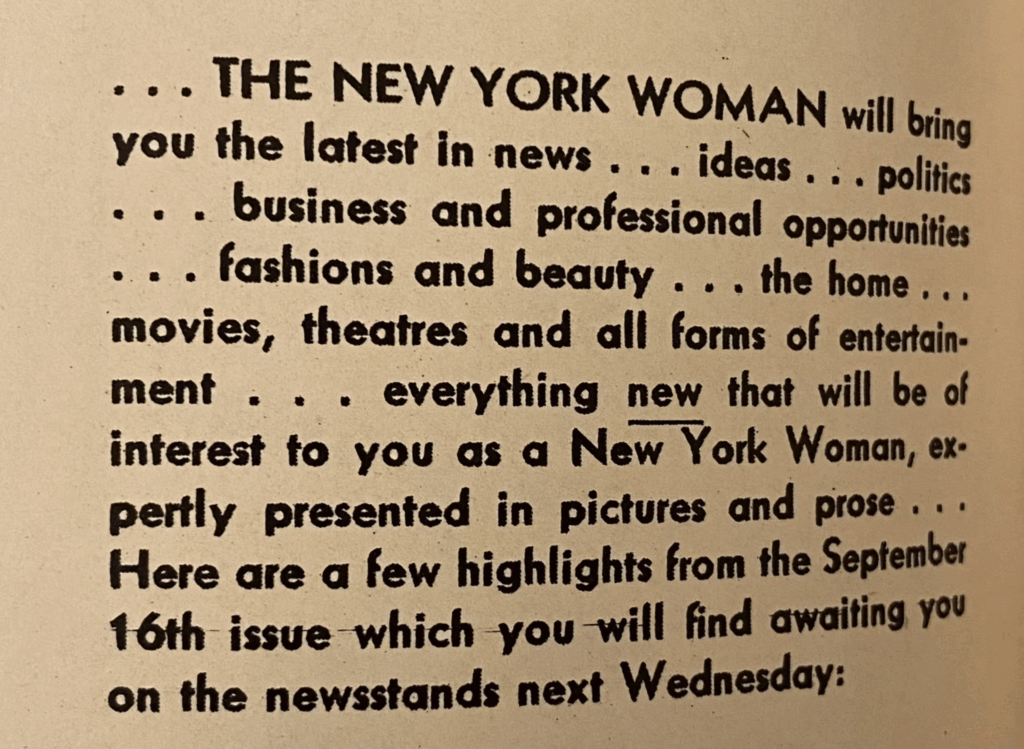
While attending to conventionally ‘feminine’ topics of fashion, dating, and beauty—topics that still dominate contemporary women’s magazines—The New York Woman’sinclusion of detailed articles on politics, career advice, and financial management underline how women’s lives were being reshaped during the 1930s. Rather than presenting a principal concentration on housekeeping and domestic affairs, as women were gaining access to professional institutions and the public sphere of the modern metropolis, The New York Woman reflects how magazines began to offer more diverse content to women readers, which better reflected the new realities of their urban lives.
The magazine’s weekly column, “Soundings: Opinions of the New York Woman,” printed select readers’ correspondence with the magazine editors, covering topics ranging from whether America should join the Second World War to whether it was ‘proper’ for single women to drink alcohol at bars in the city. The publication also offered profiles of prominent career women in New York, many of whom worked in traditionally male-dominated industries. These ranged from Judge Justine Wise Tulin, the first New York woman to hold a judicial post higher than a magistrate, to women working as political advisors on the 1936 Presidential election campaigns

“9 to 5…five to nine.” Profile of Barbara Schaffa, a woman “typical of the girl all busy men desire; the smart, self-sufficient secretary,” in the October 7, 2025 issue of The New York Woman. The New York Historical.
While detailing the latest fashion trends through exquisite watercolor illustrations in its weekly feature, “Today Along Fifth Avenue,” The New York Woman challenged many reductive myths around style and beauty. Its writers questioned the youth-centered ideas of beauty and glamour that had defined the 1920s flapper era. Instead, in such articles as Inez Calloway Robb’s “40 Becomes ‘The Fashionable Age,’” The New York Woman profiled Wallis Simpson, arguing that women of all ages could embody the glamour and excitement of modern America.

The “Today Along Fifth” feature, in the October 7, 1936 issue of The New York Woman. The New York Historical.
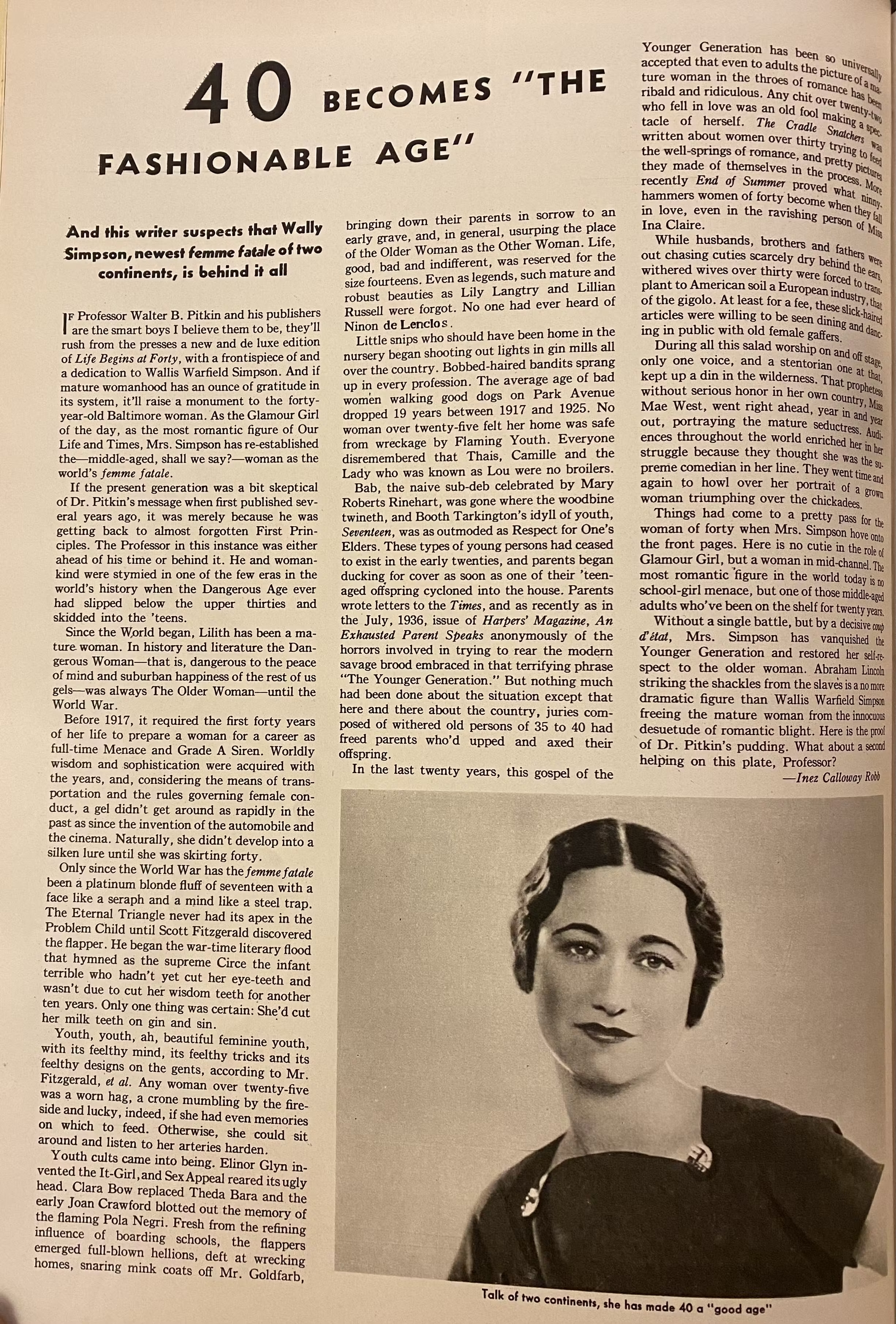
“40 Becomes ‘The Fashionable Age,’” featuring a profile of the American socialite Wallis Simpson, in the October 7, 1936 issue of The New York Woman. The New York Historical.
The magazine also ran features on a range of topics relating to life in the Big Apple. These included articles designed to improve domestic life. Readers could browse reviews for appliances tailored to cooking in a small apartment kitchen, guides to New York nursery schools, fashionable color schemes for decorating an apartment, and advertisements for new apartment buildings in the city (from the Savoy Plaza to the El Dorado). New York nightlife was another prominent topic. Notable features surveyed fun things to do in New York for less than $5, lists of the best restaurants and bars to visit on a Saturday night, reviews of new Broadway shows and movies, and ideas for quick but tasty dinners to cook for guests.
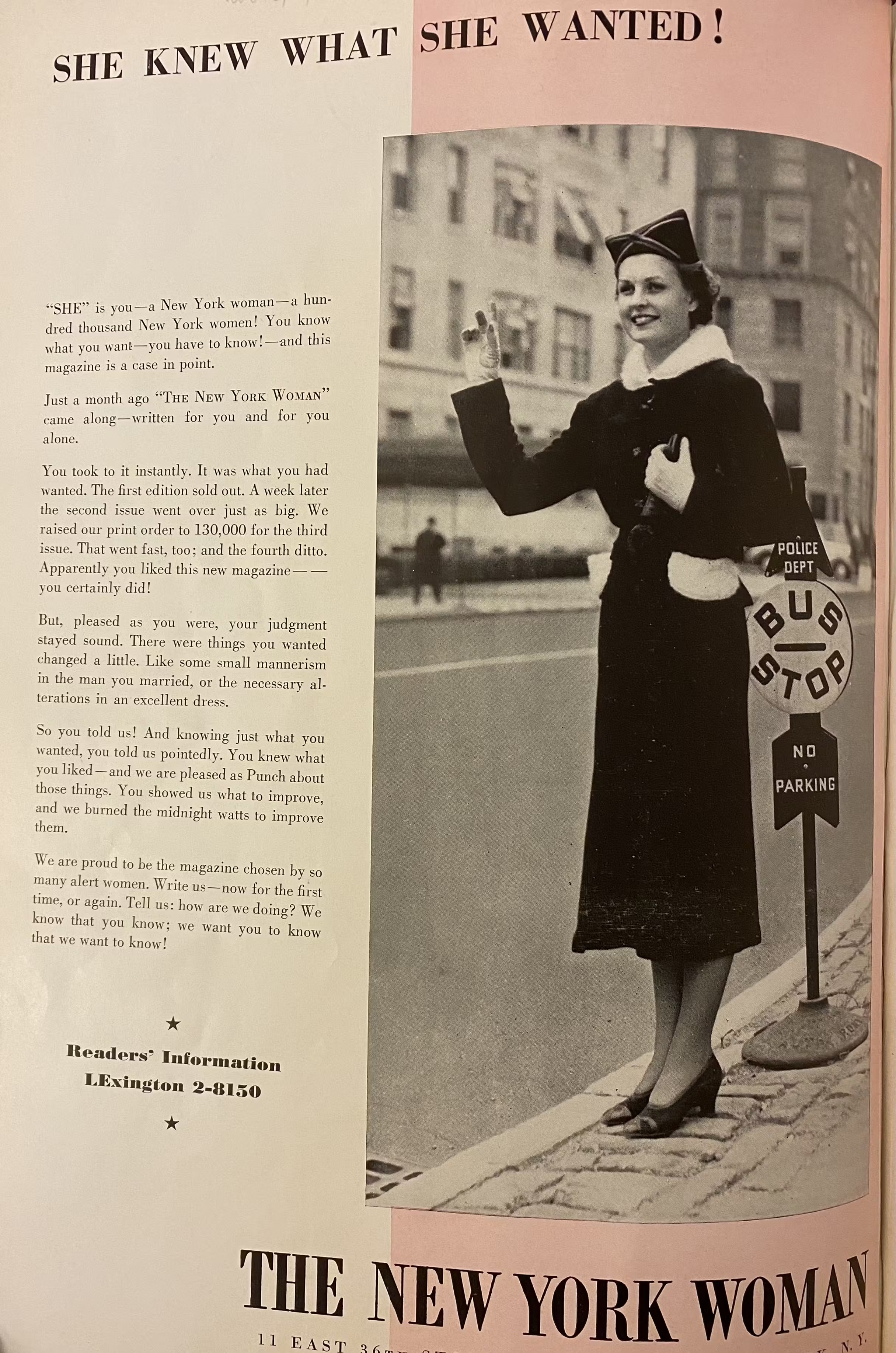
“She knew what she wanted!” Making the case for the new woman in the October 7, 1936 issue of The New York Woman. The New York Historical.
The New York Historical’s collection of The New York Woman magazine offers fascinating insight into New York women’s aspirations, ideas, concerns, and daily lives in the 1930s, and illuminates how American women’s lives were changing rapidly during this decade. Whereas magazine readership is waning in the twenty-first century, this collection underlines the centrality of magazines to early-20th-century American culture. As The New York Woman declared to its readers: “To live successfully in New York, read The New York Woman.”
PRIDE FLAG RAISED OVER MAIN STREET

CREDITS
Written by Dr. Angelica De Vido. De Vido is the 2024-2025 Mellon Foundation-Robert David Lion Gardiner Fellow at The New York Historical.
All image are copyrighted (c) Roosevelt Island Historical Society unless otherwise indicated
THIS PUBLICATION FUNDED BY DISCRETIONARY FUNDS FROM CITY COUNCIL MEMBER JULIE MENIN & ROOSEVELT ISLAND OPERATING CORPORATION PUBLIC PURPOSE FUNDS.
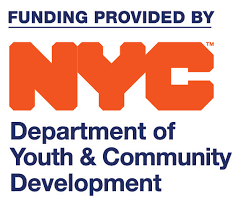

Copyright © 2025 Roosevelt Island Historical Society, All rights reserved.Our mailing address is:
rooseveltislandhistory@gmail.com

Leave a comment